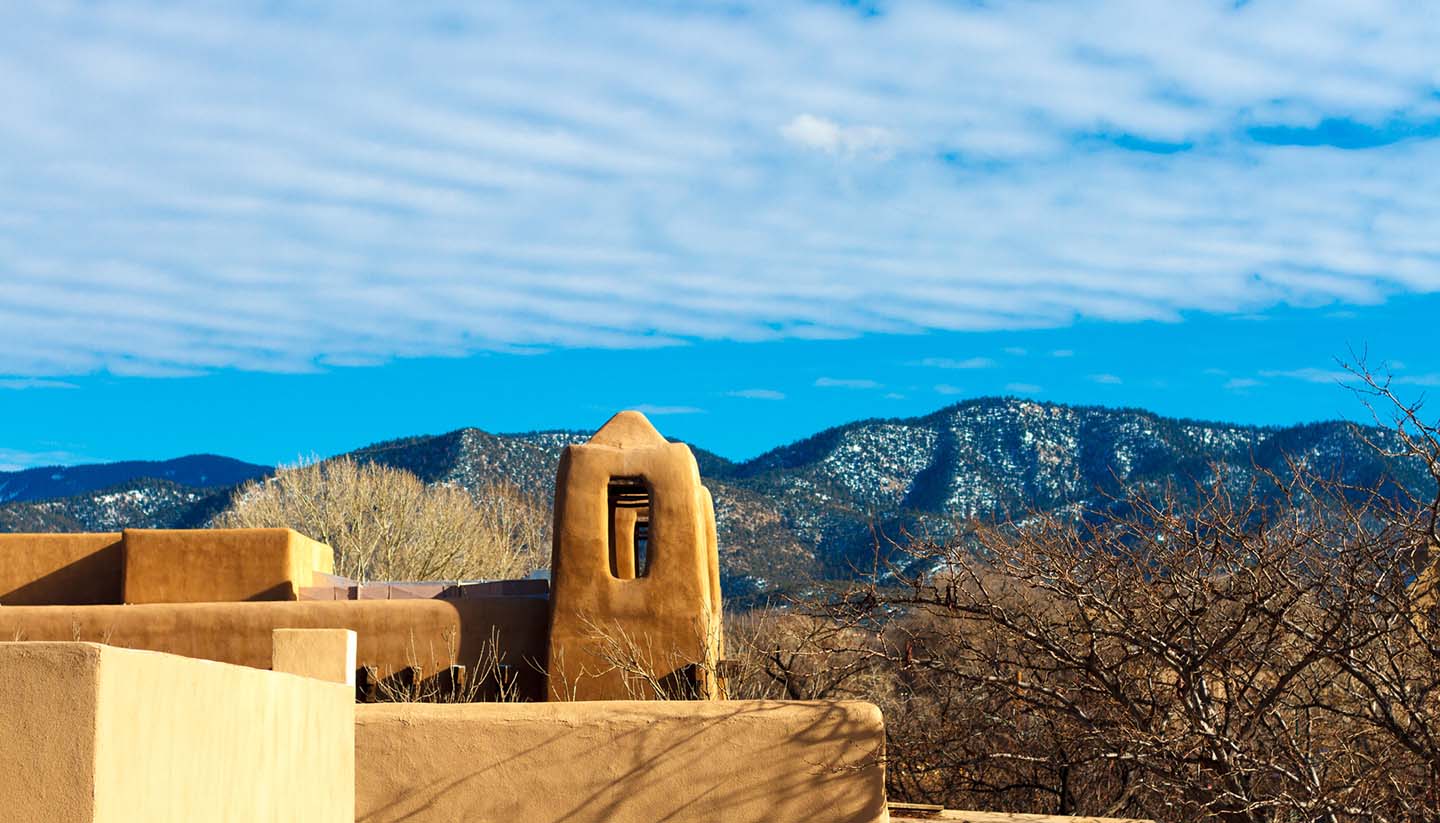Santa Fe History
For over 400 years, Pueblo Indian, Spanish and Anglo cultures have crossed paths in Santa Fe, creating a sparkling and enticing city.
The oldest capital city in the United States was settled 13 years before the Mayflower Pilgrims landed at their Plymouth colony.
Long before the Europeans arrived however, a cluster of Pueblo Indian villages had sprung up in the 11th and 12th centuries. These are believed to have been deserted 200 years before the Spaniards arrived.
There were a few residents as early as 1607, but life in Santa Fe really kicked off with the arrival of conquistador Don Pedro de Peralta, who chose the ancient Pueblo Indian ruin of Kaupoge to plot the town site in 1609-10.
Spanish missionaries and soldiers busied themselves trying to convert and control the local Pueblo Indian population.
It didn’t go down well.
The region’s Pueblo Indians numbered around 100,000 and weren’t going to take the Spanish takeover lying down. In 1680, the indigenous peoples rose up against the Spaniards. They killed several hundred, and the rest fled to Mexico.
But by 1692, Santa Fe was back in the hands of the Spanish, after Don Diego de Vargas reconquered the city. Santa Fe prospered, and Spanish-Indian relations eventually improved.
Following independence from Spain in 1821, Santa Fe became the capital of the Mexican province of New Mexico. Americans began arriving, thanks to the opening of the Santa Fe Trail from Missouri.
Early on in the Mexican-American War in 1846, General Stephen Watts Kearny raised the US flag in Santa Fe, and New Mexico was ceded to the Americans two years later.
When the railroad arrived in 1880, Santa Fe boomed. By 1912, it was the capital of New Mexico.
Santa Fe established itself as a buzzing cultural hub, opening museums, galleries and ensuring its unique adobe architecture was protected.
Did you know?
• The Santa Fe Fiesta has been held each autumn for over 300 years.
• Santa Fe is nicknamed the ‘City Different’.
• Santa Fe was designated a UNESCO City of Design, Crafts and Folk Art in 2005.


